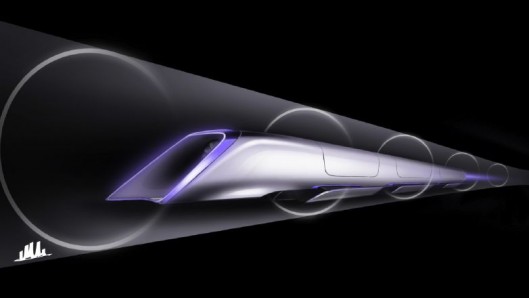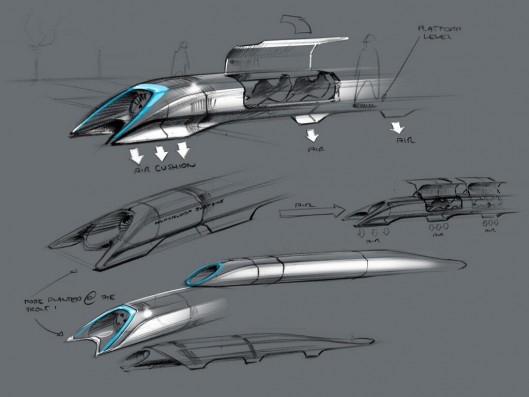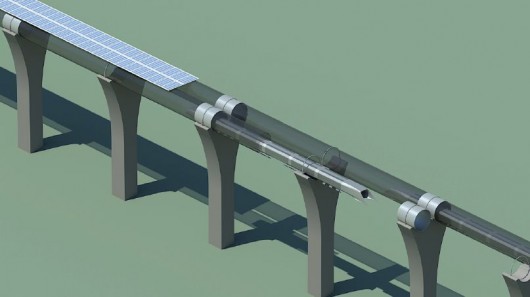Elon Musk gives us the goods on Hyperloop
By Ben Coxworth
August 12, 2013
He may be the man behind PayPal, Tesla Motors and SpaceX, but Elon Musk has been garnering more attention lately for his proposed Hyperloop transit system. Although virtually no details had previously been announced, Musk has stated that it would serve as a much faster, more efficient alternative to traditional passenger rail transport – more specifically, it would allow passengers to travel the 350 miles (563 km) from Los Angeles to San Francisco in just 30 minutes. Well, this afternoon (as promised) he finally let everyone in on just what it would be, and how it would work.
Many people had been envisioning Hyperloop as something akin to a giant vacuum tube with electromagnetically-suspended capsules running inside of it – these capsules would be loaded with passengers and simply be sucked along.
According to Musk’s announcement, however, one of the problems with such a setup would be the fact that the air column within the tube would build up in front of each capsule as it traveled down the tube. He likens it to the resistance you encounter when trying to push a plunger through a syringe full of fluid. His solution? Put an electric compressor fan on the nose of each capsule, that would draw the air through it.
This would also provide a means of suspension, as the drawn-in air could be expelled through vents in the bottom of the capsule, creating a very low-friction cushion that would keep the vehicle floating softly within the tube – while it traveled at speeds of up to 700 mph (1,127 km/h).
An onboard battery would reportedly be sufficient to run the fan for the whole LA to SF trip, but something else would be required to provide propulsion. For that, Musk is suggesting an external linear electric motor, built into the inside of the tube. In his words, it’s “simply a round induction motor (like the one in the Tesla Model S) rolled flat.” In the near-frictionless tube, a series of these motors placed about one every 70 miles (113 km) should provide enough of a continuous boost to keep the capsules moving at sub-sonic speeds. All told, the sections of the tube containing the motors should make up less than one percent of its total length.
The motors would be powered by photovoltaic panels mounted on top of the tube, which Musk claims could generate “far in excess of the energy needed to operate.”
He estimates that the capsules and motors will cost several hundred million dollars at most, with the price tag of the tube sitting more around several billion, but that it would still be cheaper than the planned California bullet train. Additionally, he notes that it should be easier and cheaper to build, as it could just be placed up on giant pylons over existing land, mostly following the Interstate 5 highway.
Each pylon would contain two adjustable lateral dampers and one vertical damper, which would be used to keep the tube level in the face of shifting ground and thermal changes. Additionally, telescoping sections at each end of the tube would be included to tweak its length as needed.
Finally, it should be noted that Musk doesn’t plan on building the Hyperloop himself – he simply wants to get the design out there, for other parties to run with.
We’ll have more of an in-depth analysis soon. In the meantime, techy types can read up on all the details in the PDF available via the link below.
Source: Tesla Motors
Copyright © gizmag 2003 - 2013 To subscribe or visit go to: http://www.gizmag.com


